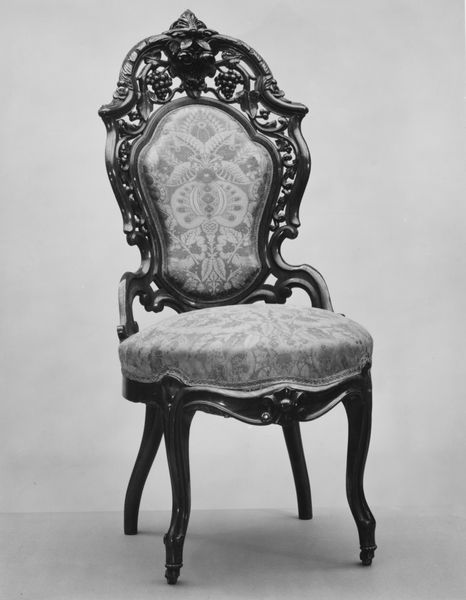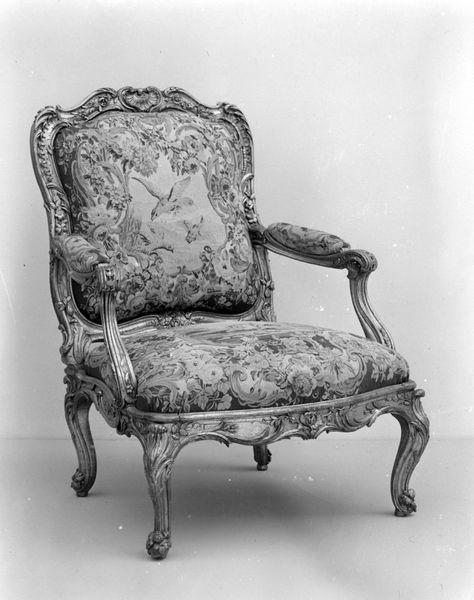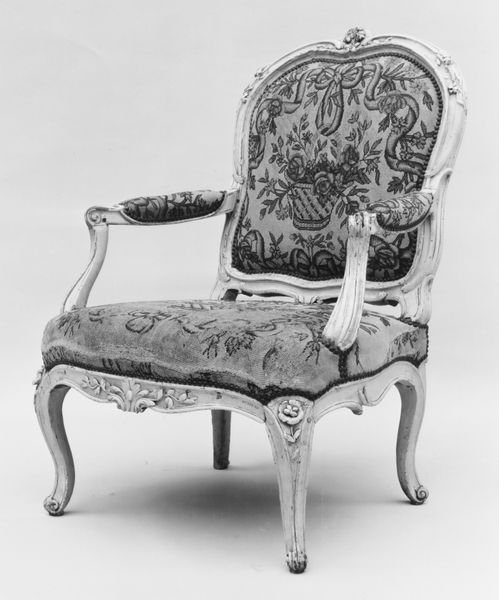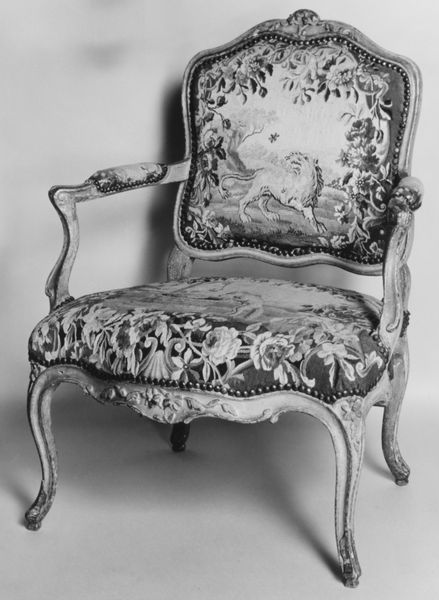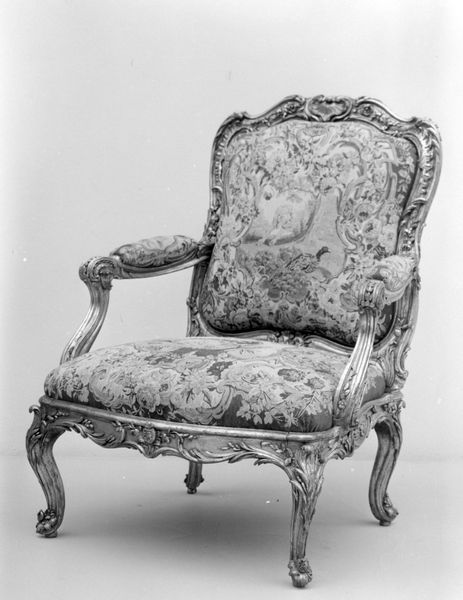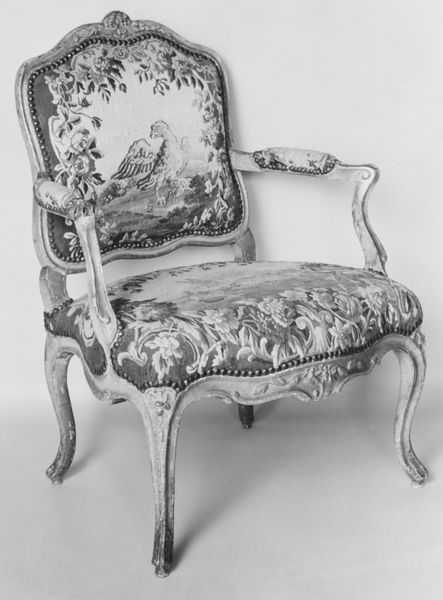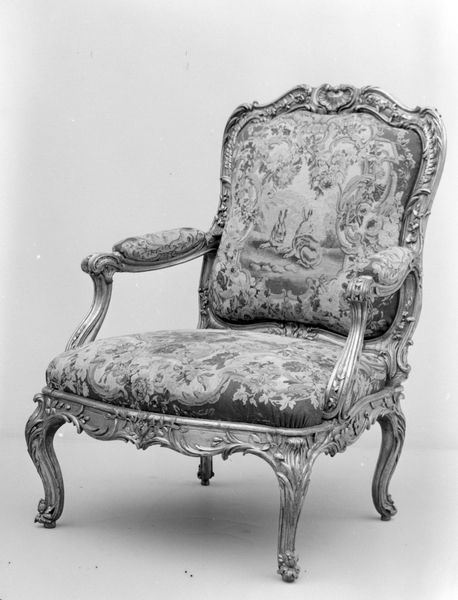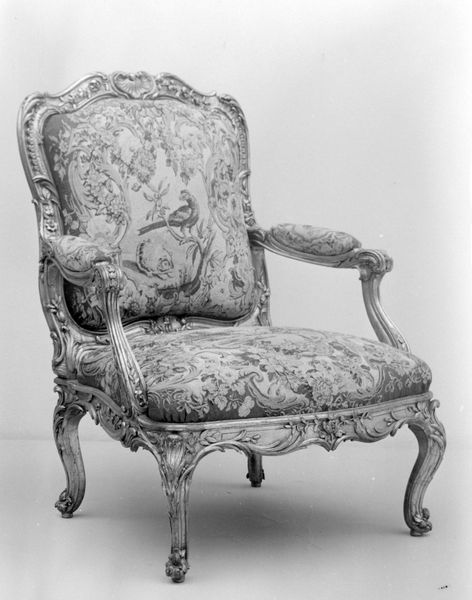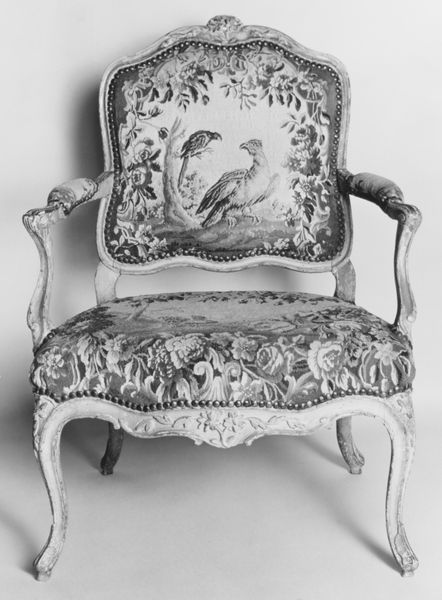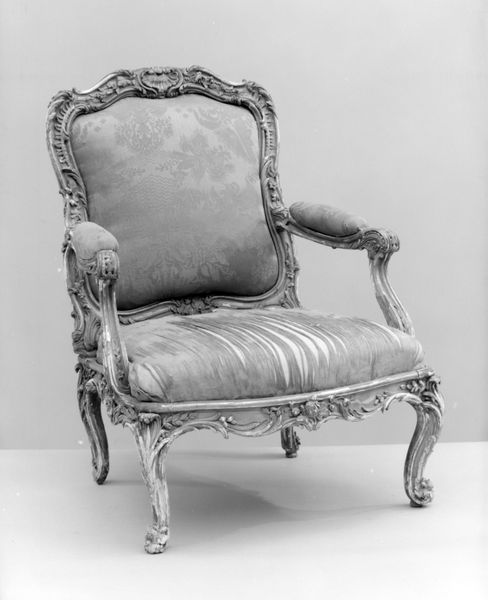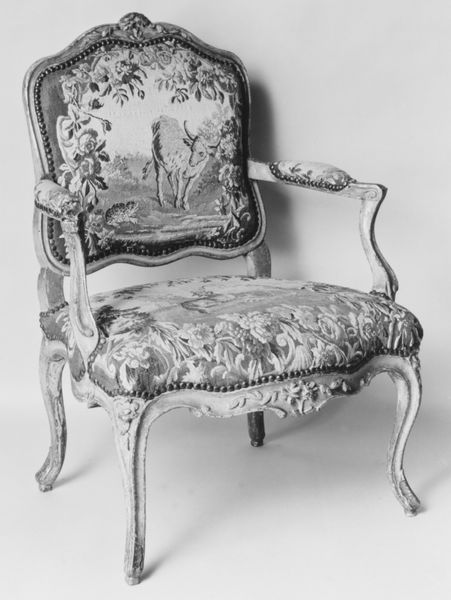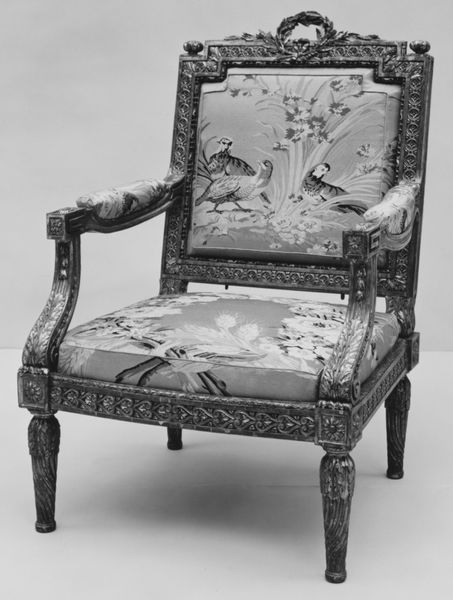
carving, sculpture, wood
#
carving
#
sculpture
#
furniture
#
classicism
#
sculpture
#
wood
#
decorative-art
Dimensions: 48 x 27 1/2 x 31 in. (121.9 x 69.9 x 78.7 cm)
Copyright: Public Domain
Curator: Before us is an interesting artifact currently housed at the Metropolitan Museum of Art. This “Side Chair” crafted by Joseph Meeks & Sons in 1859. Editor: Oh, my, it is extravagantly ornamented. The density of the carved details along the back is quite something. Do you know what kind of wood this is? Curator: Historians categorize pieces like this within the American Classicism style, reflecting a renewed interest in the forms and motifs of ancient Greece and Rome during the mid-19th century. Its design signals status, reflecting the ideals and aspirations of the upper-middle class at the time. Editor: The process behind such elaborate carving! Think of the skill, the labor hours. The means of production always interest me—where did they source the wood? Was this artisan work, or something more industrialized? You have got grape clusters, leaves. Curator: That is a good question. What this chair represents, of course, is taste and social class. The grapes represent a bountiful, secure future. The chair makes a powerful statement about the owner’s prosperity and standing within their community. Editor: Sure, the grape might imply abundance to its owner. But, at the time, this chair certainly embodied exclusivity and the wealth disparity of that moment. Such intense detailing isn't only a statement; it demands serious expenditure. Curator: Indeed. Objects such as these chairs tell important tales of aspiration and value in a society undergoing tremendous transformation during the Industrial Revolution. How did a piece of furniture become more than utilitarian object? Editor: Exactly. It invites questions about its makers. Those carvings tell a complex story of both artistic skill, manual work and their place within the social landscape of its time. It’s about materials and the conditions that make that sort of ornament feasible. Curator: Precisely. Through this piece, we might learn not only the styles but about the labor conditions which sustained it, what societal transformations were happening as it was produced. It becomes a record of social identity. Editor: Seeing it in this way truly enriches its viewing.
Comments
No comments
Be the first to comment and join the conversation on the ultimate creative platform.
